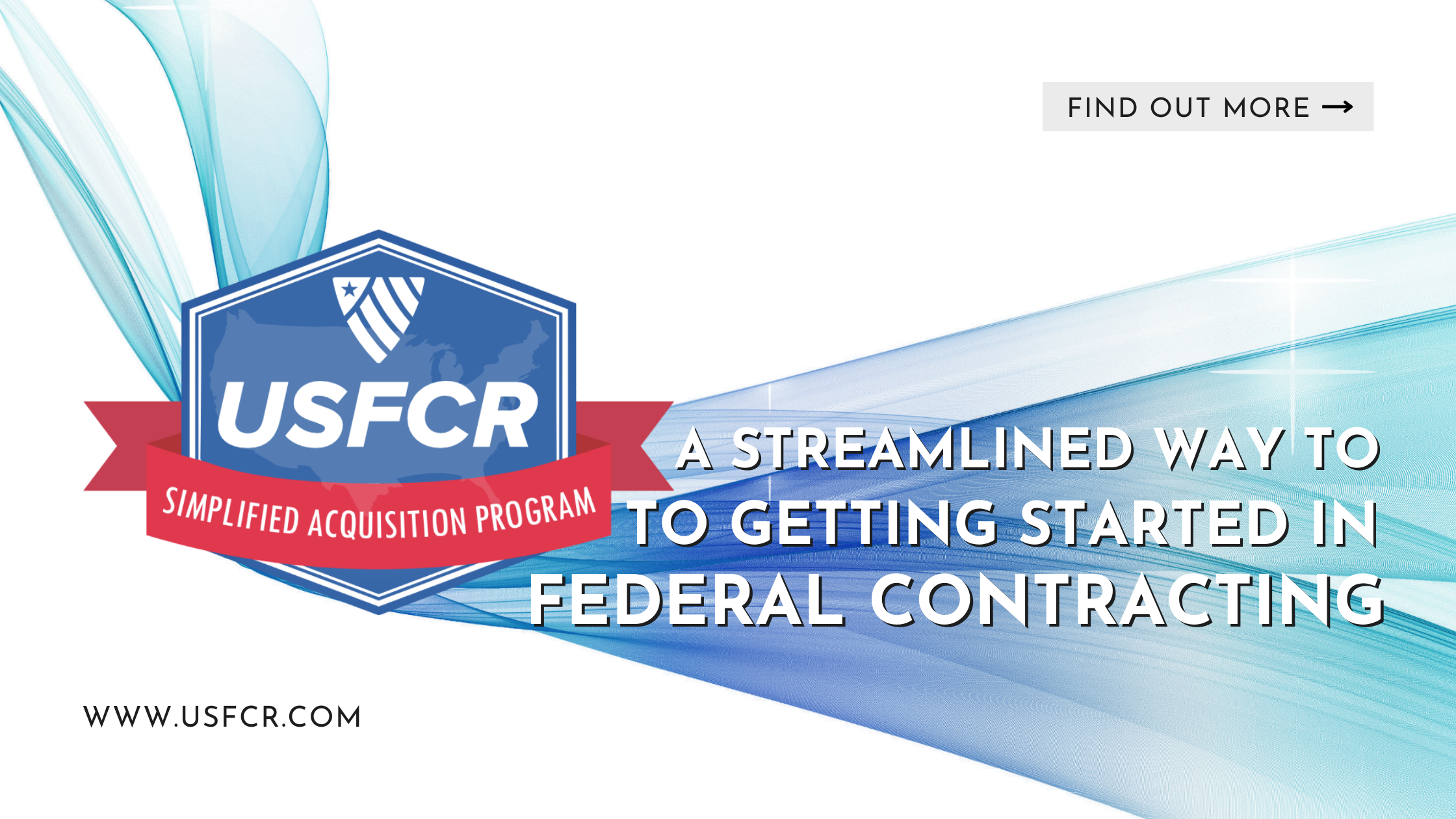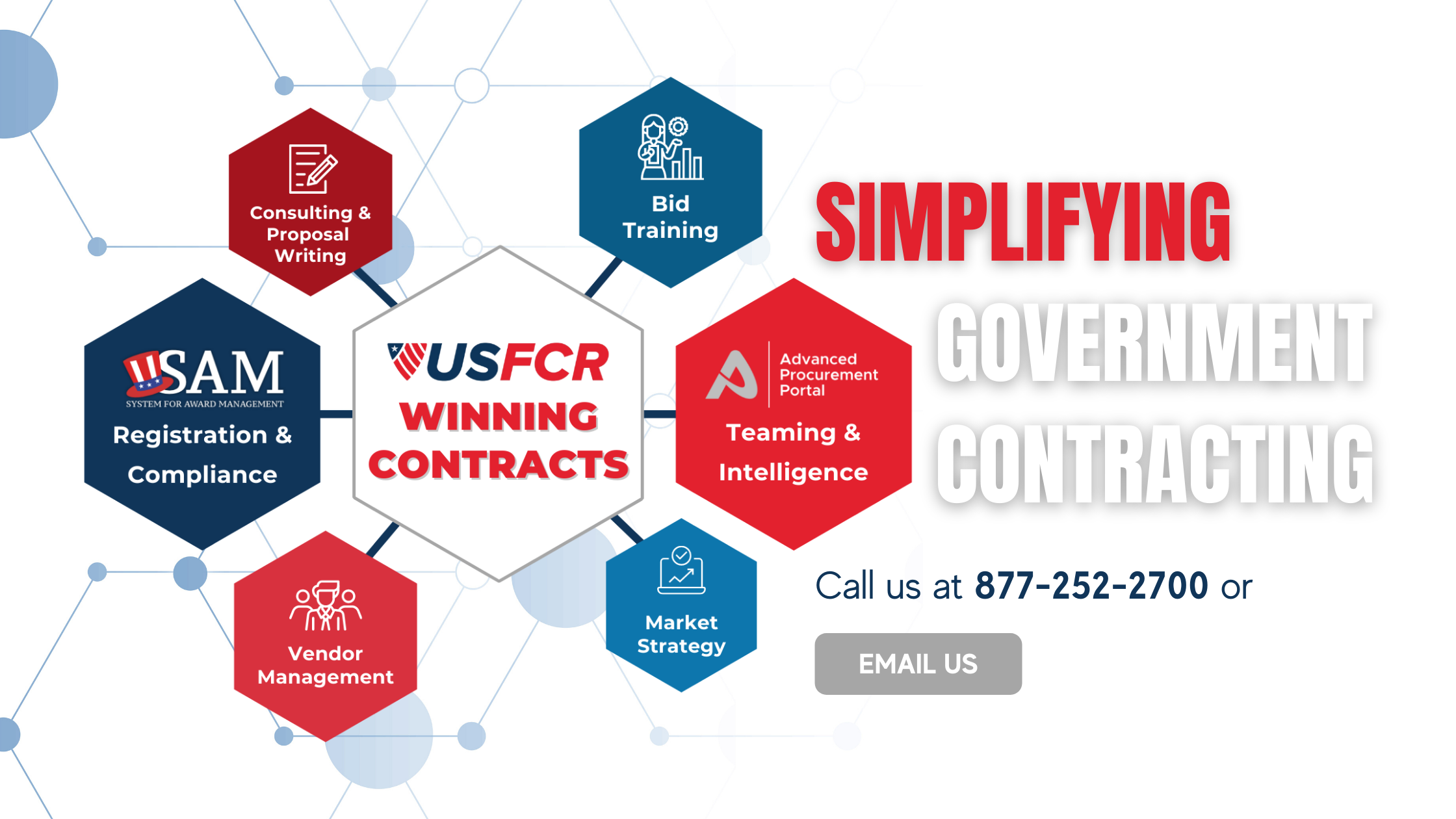

The Federal Acquisition Regulations (FAR) lay the groundwork for how government solicitations and contracts are put together. And while it's true that the FAR is mainly written with government officials in mind - the ones crafting the contracts - it's a mistake for businesses to gloss over them.
After all, these regulations aren't just about compliance. Having a firm grasp of the FAR can tilt the scales in your favor in government contracting.
Understanding how the government builds contracts can help you with bidding, marketing, and networking. The clauses and provisions teach you what you can and cannot do. They can also help you speak the language of your future client.
USFCR's Training Department has put together the Ultimate Guide to the Federal Acquisition Regulations to direct your attention to some of the most important sections of the FAR (especially if you're a small business).
This is a comprehensive guide, but we also have a quick guide to the FAR.
The System for Award Management (SAM) will require that you acknowledge some key sections of the FAR before allowing you to compete for federal awards. The government will check this during registration, renewal, and every time you compete for a federal award. USFCR can assist in making sure that you check the correct boxes with our SAM Assistance Service. Here's how you locate your Reps & Certs for reference when contracting officers request it.
If you haven't registered in SAM yet, you should understand that this is the first requirement for government contractors.
If you have further questions, you can call (866) 216-5343
If you can understand agency needs, you can understand your buyer. In this section, you'll learn about the following:
The government often needs to speed up and simplify its acquisitions. The benefit to you, the business, is that their simplified acquisition procedures (SAP) make it easier to win government contracts. Generally, purchases under $250,000 are considered eligible for simplified acquisition procedures.
USFCR is the only company worldwide to offer The Simplified Acquisition Program.

Sometimes a government contract works exactly how you thought it would, through competitive bidding. FAR Part 15 helps you understand the following:
Ever wonder how small businesses compete on the same playing field as Fortune 500 companies? One way is participating in the small business programs spelled out in FAR Part 19.
The government defines "small business" with an industry-by-industry classification system. Understanding this metric is essential because it determines your eligibility for small business contracts. The government prefers to contract with small businesses whenever possible.
As previously mentioned, contracts can be reserved for businesses that qualify as small. Specific socio-economic qualifiers create even smaller pools of competition to eliminate competition further. The small business programs and their respective mandatory spending goals are listed below:
Sometimes, small businesses can benefit from streamlined "sole-source" contracts. These are contracts that do not have to be completed through traditional processes. Businesses should understand the circumstances that can lead to sole-source contracts.
Read more about FAR Part 19.
Labor laws in the private sector also affect government contracts. Additionally, there are some specific labor laws unique to government acquisitions. These labor laws are outlined in FAR Part 22.
When paying workers or yourself on service contracts with the federal government, there are established "minimum wages." Also known as Wage Determinations, these numbers will help you with your pricing and help you stay in compliance.
When it comes to construction in government contracting, things get more specific. Not only is there a whole section of the FAR dedicated to this industry (FAR Part 36), but there are also specific labor laws to consider.
Read more about FAR Part 22.

Government contracting might get all the glory, but subcontracting is worth your consideration too. You can hire subcontractors to work underneath you or be a subcontractor yourself. Subcontracting on federal opportunities can help you prove that your business can work with the government.
Government contracting officers must approve subcontractors. The checklist they use for approval is a section of FAR Part 44.
Depending on a product's usage in your contract, you may or may not have to declare the manufacturer as a subcontractor.
The government takes quality assurance very seriously because they are doing business with all types of companies. If they didn't have a way to guarantee quality, they would be putting themselves in situations with subpar deliverables. Their policies for quality are spelled out in FAR Part 46.
QA on products differs from QA on services. The government has a separate checklist for each type of contract.
It largely falls upon the government to create Quality Assurance Surveillance Plans (QASP), but the government is not an expert in your field. They may ask for your contribution to a quality assurance surveillance plan, or you may be able to point out flaws in their plan. In contrast, understanding the government's provided QASP will help you better meet their needs.
Read more about FAR Part 46.
Remember at the beginning of this blog post when we mentioned that the Federal Acquisition Regulations were mostly written for government officials? FAR Part 52, the biggest part of the FAR, is the exception to that rule. This part of the FAR is written for contractors.
If you've opened any federal solicitations, you've seen the clauses and provisions of FAR Part 52 referenced. Usually, they are referenced with a series of numbers and a short title. After you find them in the solicitation, you must find them in the FAR.
The video below details how to find the clauses and provisions that apply to your solicitation and eventual contract.
Government contracting is regulated on a highly high ethical level. You are dealing with matters of national importance when you undertake a government contract. Therefore, it is important to understand the ethics clauses in FAR Part 52.
You probably have many questions about pricing your offer on government contracts. While each opportunity will pose unique challenges for your pricing, there are some standards to consider in FAR Part 52. They include, but are not limited to, the following:
We saved the best for last. The bidding clauses and provisions of Far Part 52 will affect each and every offer you work on. Following these instructions is a make-or-break for government contractors.
An additional clause in FAR Part 52 defines The Buy American Act.
This is by no means an exhaustive list of policies and procedures. The Federal Acquisition Regulations are over 1,800 pages and are written in variations for different agencies' unique needs.
If you have further questions, you can call (866) 216-5343 or send USFCR Training an email, and we'll get back to you as soon as possible.
If you would like to reference the Federal Acquisition Regulations directly, you can also visit acquisition.gov.

Originally published Mar 25, 2020, 12:44:16 PM, updated June 2023
US Federal Contractor Registration (USFCR) is the largest and most trusted full-service Federal consulting organization. USFCR also provides set-aside qualifications, including women-owned, veteran-owned, disadvantaged (8a), HUBZone, and other federal contracting services, technology, and training.